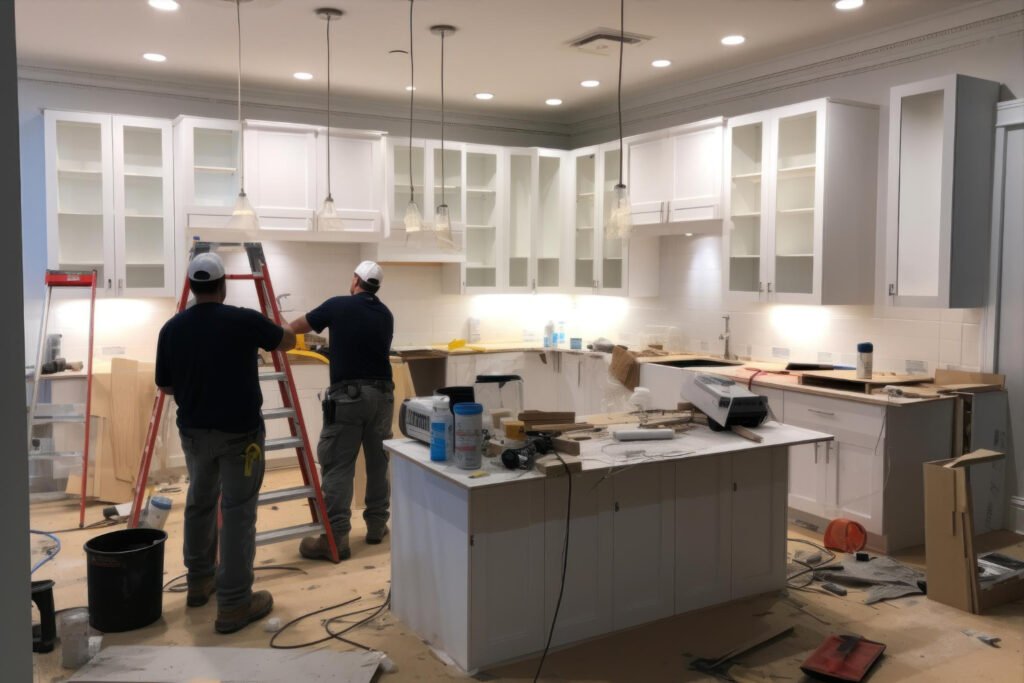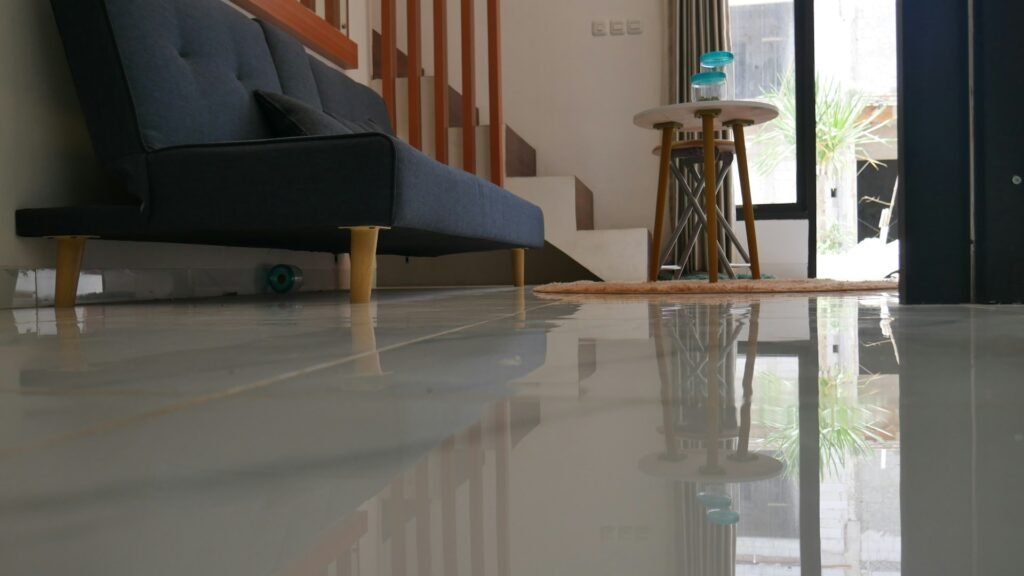Bathroom updates are a great way to freshen up your home, but they can come with hidden risks if you’re not careful. One of the biggest issues people face after a remodel is water damage. Maybe you’ve heard a friend mention that their brand-new vanity started swelling, or tiles started coming loose just weeks after a bathroom renovation. Most of the time, it’s not the design that went wrong, it’s the lack of planning around moisture control.
In a place like Orlando, keeping water in check is even more important. With all the humidity in the air, small leaks and poorly sealed spots can turn into bigger problems fast. Mildew odors, warped floors, and even structural issues can creep in without much warning. If you’re updating a bathroom in Orlando, it’s a smart move to plan ahead and make sure your changes can stand up to the damp conditions. It all starts with knowing where things go wrong and how to stop that from happening.
Common Sources Of Water Damage
Bathrooms deal with water all day, every day. That’s why so many of the common issues show up in these spaces. But not every problem is easy to spot early.
The most frequent troublemakers include:
– Leaky shower fixtures and tub edges: Drips you can’t see behind the wall or tiny openings where the tub meets tile can collect moisture over time
– Poor plumbing connections: Loose pipe joints behind vanities or under the floor can slowly cause damage without you knowing
– Condensation buildup: With frequent hot showers and limited airflow, bathrooms can develop damp spots even if there’s no leak at all
– Cracked grout and worn caulk: Water seeps into these small gaps between tiles or around fixtures, eventually weakening the material underneath
Even a small leak left alone can turn into something bigger. Dark spots on walls or flooring, peeling paint, musty smells, or squishy tiles are all red flags. These issues often pop up after renovations when sealing isn’t done right or materials aren’t made for wet conditions. Catching them early helps, but preventing them from the start is better.
Selecting Water-Resistant Materials
Choosing the right materials plays a huge role in preventing moisture damage, especially in bathrooms. It’s easy to fall in love with textures or colors, but strength against humidity should guide your choices first.
For floors, skip options that soak up moisture. Good choices include:
– Porcelain or ceramic tile: They don’t absorb water and are easy to clean
– Luxury vinyl tile (LVT): It has a sleek look and holds up well against spills and high humidity
– Sealed concrete: For a more modern look, this material adds durability as well as strength
Walls and vanities also matter. Go for water-resistant drywall or cement board behind tile in shower and tub areas. For the vanity, look for solid wood core with sealed edges or even marine-grade plywood. Materials like MDF tend to swell up when they get wet, so they’re better avoided in moisture-heavy spots.
When it comes to finishes and sealants:
– Use caulk meant for bathroom use to seal joints around sinks, tubs, and countertops
– Choose paints labeled for bathrooms that resist mold and peeling caused by constant dampness
– Grout with water-resistant additives can help prevent moisture from getting through cracks
Every decision adds another layer of protection against Orlando’s damp air. With materials designed for moisture, you’re already reducing the risk of future damage without changing your whole design plan. Keep those priorities straight and your bathroom update can last longer and look better while doing it.
Waterproofing Techniques and Solutions
Waterproofing is a cornerstone in combating water damage, especially important when dealing with bathroom areas. Here’s how to make sure your bathroom stands up to Orlando’s humid climate.
Use waterproof membranes on walls and floors. These go beneath tiles and create a barrier against moisture, preventing leaks from seeping into wallboards and subflooring. Proper membrane installation is key, particularly around showers and tubs, where water exposure is highest. Sealing edges with waterproof tape enhances this protection further.
Don’t overlook the power of quality sealants. A high-grade silicone sealant around tubs, sinks, and other fixtures blocks water from sneaking into unwanted areas. Choose sealants specially geared for bathroom use to combat mildew and follow their recommended application guidelines.
When it comes to paint, pick those labeled for moisture protection. Water-resistant paint on walls can ward off damage before it starts. Similarly, using grout with added water-repellents prevents gaps that might let moisture bypass defenses.
Lastly, think about moisture-resistant silicone for any caulking needs. These advancements keep rooms dry and ensure your investment holds up longer against humid conditions.
Routine Maintenance and Inspections
Routine upkeep helps catch potential water issues early, saving you from costly repairs.
1. Check caulk and grout annually. Look for any areas that appear cracked or worn. Reapply promptly to maintain a seamless barrier against moisture
2. Inspect fixtures and pipes under sinks for leaks. Catch drips before they lead to larger concerns
3. Pay attention to ventilation. Clean exhaust fans regularly to enhance airflow, reducing condensation build-up
4. Examine floorboards or tiles for signs of softness or discoloration, which can indicate hidden leaks
Catching problems early is like putting on a raincoat before a storm hits. Avoid disruptions and enjoy your new bathroom without surprises. Regular checks and simple fixes prolong the life of your updates.
Ensuring Professional Installation and Repairs
A professional touch in your bathroom project can mean the difference between success and a slippery slope into costly fixes. Skilled contractors bring expertise that DIY solutions can’t match. They ensure that all elements, from plumbing to sealing, are done correctly the first time.
Hiring experienced professionals comes with its own set of perks. They know Orlando conditions and how to best prepare against moisture and heat. Their insight into choosing the right materials and methods can prevent problems from spiraling down the road.
To find the best fit, consider:
– Researching contractors with proven expertise in bathroom remodeling
– Reading reviews and seeking referrals from local homeowners
– Clarifying project details in consultations to ensure they align with your vision
Engaging the right experts means your project begins with a strong foundation. That helps reduce the chances of future headaches and mold issues behind your brand-new walls.
Protect Your Bathroom Investment
Even a small misstep in renovation can lead to moisture problems, so building a bathroom capable of resisting water damage is worth the effort and investment. From selecting waterproof materials to focusing on quality installation, each part helps shield your bathroom from future troubles.
Regular inspections keep everything in check, laying the groundwork for a long-lasting, beautiful bathroom. When done right, preventative measures spare you unexpected headaches, letting your renovation stand the test of time.
Lean into these strategies for peace of mind. Your bathroom can handle Orlando’s climate and stay as inviting as the day it was finished.
Enhance the comfort and durability of your bathroom by preparing for moisture challenges. Keeping your remodel safe from water damage is key, especially in humid Orlando. If you’re considering the remodeling of a bathroom, let FC Contractors guide you every step of the way.




